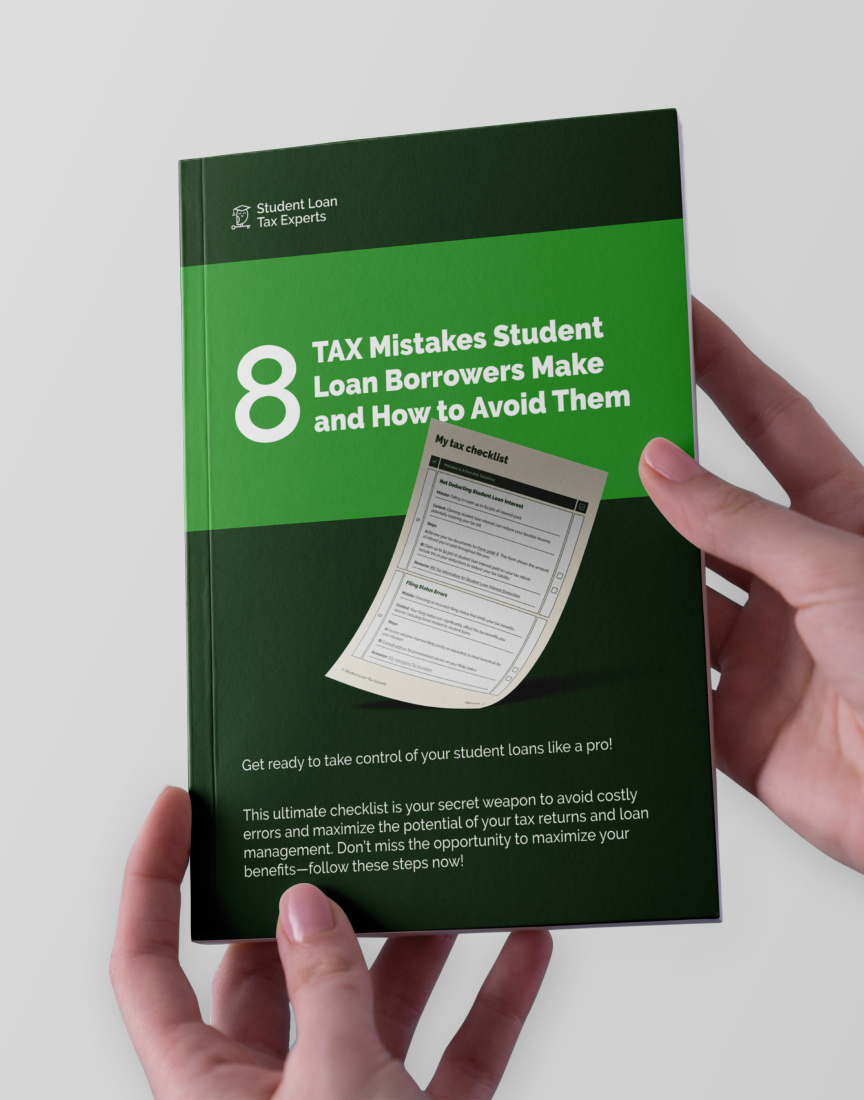July 19, 2024
12
min read

Student Loans in 2024 - Everything You Need to Know
Everything you need to know about Student Loans in 2024. Learn how to lower your taxes and your monthly payments.

Table of Content
Managing student loan debt isn’t easy, we all know that. However, the right repayment plan can significantly ease the burden.
One effective option is the income-driven repayment plan (IDR), which can save you thousands of dollars over the life of your loan.
This guide explores how to maximize your savings through an income-driven repayment plan.
You are going to love this article.
We helped numerous clients save $$$ thousands of dollars using these plans.
An income-driven repayment plan sets your monthly federal student loan payments based on your income and family size. The primary goal is to make payments manageable, even with a low-income or large family.
Monthly payments are capped at 10%-20% of discretionary income, adjusting as your financial situation changes. After 20-25 years of qualifying payments, any remaining loan balance may be forgiven.
(Discretionary income is the amount of money you have left after paying for necessary expenses, like taxes, housing and food. You use discretionary income for "extra" things, like entertainment, savings and investments.)
| Repayment Plan | Eligibility | Monthly Payment | Benefits | Drawbacks |
|---|---|---|---|---|
| Income-Based Repayment (IBR) | Direct loans, FFEL loans, PLUS loans (students) | 10-15% of discretionary income | Lower payments, potential forgiveness | More interest over time, annual verification |
| Income-Contingent Repayment (ICR) | Direct loans | 20% of discretionary income or fixed over 12 years | Affordable payments, potential forgiveness | Higher interest, annual verification |
| Pay As You Earn (PAYE) | Direct loans post-Oct. 1, 2007, financial hardship required | 10% of discretionary income | Low payment, potential forgiveness | Income fluctuation impacts payments, annual verification |
| Saving on a Valuable Education (SAVE) | Direct loan borrowers | 10% of discretionary income | Low payment, potential forgiveness, some may pay $0 | More interest over time, not ideal for high earners |
Each plan has unique eligibility requirements and benefits, so review them carefully to determine the best fit for your financial situation.
To qualify for an income-driven repayment plan, you must:
Applying for an income-driven repayment plan involves these steps:
Payments under an income-driven repayment plan are based on:
Use the Loan Simulator tool to estimate payments under different plans.
Pros:
Cons:
Income-driven repayment plan offers a flexible, manageable way to repay student loans, particularly if you're experiencing financial hardship or have a variable income. By adjusting payments based on your income and family size, this plan can provide immediate relief and long-term benefits, including potential loan forgiveness.
Subscribe to Owl’s Money Advice newsletter now for more expert advice and receive our ultimate tax checklist: “8 TAX Mistakes Student Loan Borrowers Make and How to Avoid Them,” delivered to your inbox right now!
The only financial newsletter that gives actionable advice without all the boring technical jargon.
Subscribe today
July 19, 2024
12
min read

Everything you need to know about Student Loans in 2024. Learn how to lower your taxes and your monthly payments.
read more
June 6, 2024
3
min read

Paying off student loans is a significant milestone for many. But, it shouldn't hold you back from building your savings.
read more
By subscribing to Owl's Money Advice newsletter you will get:
Actionable advice to achieve your financial independence without spam or data selling!
Weekly money-saving tips and tricks you won't find anywhere else.
To-the-point advice for student loan borrowers without all the technical jargon.
The ultimate tax checklist as a FREE bonus: “8 TAX Mistakes Student Loan Borrowers Make and How to Avoid Them” delivered in your inbox right now!
Thank you. Your checklist is on the way!
Oops! Something went wrong while submitting the form. Try again or email our team at info@magnitaxexperts.com
By clicking “I want it now” you're confirming that you agree with our Privacy policy
